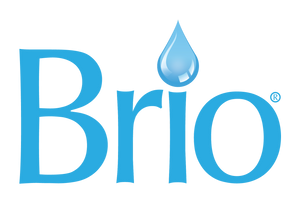Pouring fresh water into a bowl everyday may not be enough to keep Fido and Fluffy hydrated. How much hydration is necessary depends on each pet’s specific needs. However, a good rule of thumb is to always offer more water than you think, for each pet.
And it’s vital to keep pets hydrated not only through hot, humid summers, but also throughout the winter. Don’t let cold weather and snow fool you. Indoor heat can result in stealth dehydration. Plus, water in your pet’s bowl is prone to evaporate more quickly when the heat is on, leaving water bowls bone-dry before you can replenish them.

What are the signs of pet dehydration?
Signs of dehydration in cats, dogs, rabbits, and guinea pigs include:
- Loss of skin elasticity
- Loss of appetite
- Vomiting with or without diarrhea (which can also cause dehydration)
- Reduced energy/lethargy
- Panting (cats and dogs)
- Sunken eyes/dull corneas
- Dry nose
- Dry, sticky gums
- Excessive drooling (cats and dogs)
- Constipation/hard stools
The turgor test: how to check if your pet is dehydrated
The easiest way to check for non-obvious dehydration in your pet is by employing what’s called the skin turgor, or elasticity, test. Pinch a fold of skin between your pet’s shoulder blades, gently pull it up, then release it. If the skin quickly falls back into place, your pet is most likely well hydrated. If, on the other hand, the fold of skin is slow to fall back into place or doesn’t fall back at all, your pet may be dehydrated.
Perhaps conduct the turgor test when you know your pet is hydrated. The result of that test will serve as a solid baseline against which you can compare the results of any turgor tests down the road.
Keep in mind, however, that the turgor test for dehydration is not the best one to use for senior dogs and cats and certain dog breeds with loose skin or dewlaps, like shar-peis and pugs. In cases like that, a better way to check for dehydration is to gently press your pet’s gums.
Capillaries provide blood to gum tissue, so once you remove your finger, the blanched tissue will quickly become pink again if your pet is sufficiently hydrated. The longer it takes the white spot to become pink, the more dehydrated the animal.

What are the dangers of pet dehydration?
Like humans, dehydration and/or chronic dehydration in pets can lead to serious health problems and even death. Water lubricates joints, buoys and protects internal organs, facilitates digestion, and acts as a regulating thermostat for your pet’s body temperature.
Water is also necessary for the uploading of nutrients into cells. Without enough water, your pet’s body can’t balance its pH, fire up muscles, and regulate nerve function. And, as with humans, extreme dehydration in pets may result in kidney or other organ failure, and death.
Yes, pets can succumb to heat exhaustion or heat stroke. The American Kennel Club has excellent advice about heatstroke in dogs that’s well worth a read. Signs of heatstroke in cats are quite similar. The Royal Veterinary College at the University of London has invaluable information regarding heat stroke in both cats and dogs.
How To Treat Dehydration In Dogs And Other Pets
- The first thing to do if you’re concerned about your pet suffering from dehydration is to contact your vet. There’s no replacing proper veterinary advice and it can prevent worsening symptoms.
- Put your pet in the shade or a cool room and give them water. Removing your pet from a heat source or sunlight is imperative.
- Gently pour or sponge cool (not iced) water over your pet’s body - if they can cope with this. Don’t pour over their head to prevent them from inhaling the water. Stop if they start shivering.
- Don’t use wet towels or ice baths - this can either trap the heat, worsening their condition, or cool your pet too rapidly, constricting their blood vessels.

How to keep your pets hydrated… even when you’re not around.
If you catch your dog drinking from a recently flushed toilet or your cat lapping water from a dripping faucet, they’re sending you a message: “fresh water, please.” Like many mammals, cats and dogs are partial to “moving” water. They’re smart little fur babies. They know moving water tastes better and is more likely to be free of contaminants.
1. A pet water fountain
If you’re gone for hours at a time or even all day, consider installing a pet water fountain. There are many excellent models out there that feature built-in filtration, battery-powered operation in case of a power failure, a sturdy stainless steel design, and cute details.
2. Replenished bottles and bowls
Guinea pigs and rabbits should always have plenty of fresh water in their water bottles. They can, however, drink water from bowls, but if they weren’t raised on bowl water, it can be a challenge to train them to hydrate that way later in life.
3. Prepare for traveling or going outdoors
Don’t forget to bring extra water along for traveling and any outdoor activity you do with your pet. If you go out hiking with your dog, for instance, bring along two water bottles, not one. And remember: the larger the animal, the more water they’ll need.

Keep your pet safe and healthy with filtered water
Always consult your veterinarian if your pet won’t drink water or you suspect they aren’t drinking enough. It may be the sign of a more serious problem or underlying condition.
Filtered water isn’t just for the human family, it’s for the pet family too. Brio offers many different options for water filtration that suit your needs, from standalone coolers to undersink filtration units. Reliable, in-house water filtration means you’ll always have plenty of fresh, purified water on hand for you and your pets.




